In 2011 the nutritional facts have been updated and thus informations on characteristics of the deli meat products and their nutritional value could be rectified. The analysis were conducted by the National Institute of Research for Food and Alimentation (INRAN, now CREA). All micronutrients, macronutrients and other substances contained in the cold cuts have been analyzed, with the aim to refresh the existing data but also to research on the existence of substances which were not yet considered in 1993, like for example the vitamins. The data collected showed a general improvement especially on the decrease of salt and fat beyond the appearing of the essential vitamins. Those results were realized thanks to an improvement at the beginning of the production chain. Nutrition of pigs and the breeding techniques have been improved through the years, allowing the breeders to obtain animals with a better nutritional profile, which could be transmitted to the deli meat products.
Both single products and a pool of products of all companies which delivered the cold cuts were analyzed. As the results showed, there is more data available nowadays on different substances which were never analyzed before (like the vitamins B6, B12 and E), while the major part of compounds which was analyzed again delivered an update on the previous values. Additionally some PDO (Protected Designation of Origin) and PGI (Protected Geographical Indication) deli meat products were included into the 2011 analysis, chosen after a national summary on actual consumptions.
Here are the technical sheets of all main Italian cold cuts can be found, broken down into the single substances of their nutritional profile. The recently conducted analysis updates the previous ones commissioned by the Institute the last time in 1993. To get a complete overview on the applied method and results of the new analyzes, the booklet ITALIAN DELI MEATS which includes a more detailed statement (a 2011 publication about nutritional data in Italian deli meats) can be downloaded.
The PGI (Protected Geographical Indication) product “Bresaola della Valtellina” in Northern Italy is nutrient-rich due to the virtual absence of fat (2%) and its high protein content. It is a food item rich of minerals, vitamins and omega-3 fatty acids which contains around 24% less fat compared with the analysis of 1993. Show data details
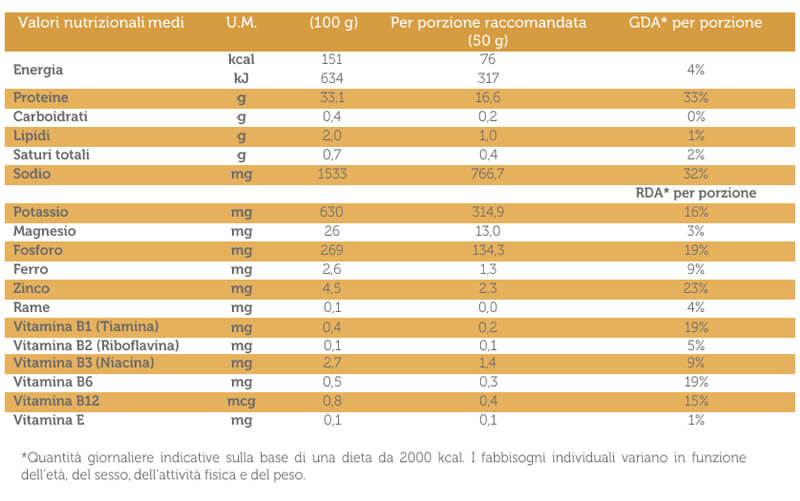
“Coppa” manifested a lower fat content to the previous analysis and a higher concentration of vitamins, in particular the vitamin B1: a serving of 50 grams covers 28% of the daily needs. The product is an important source of omega-6 fatty acids and its content of proteins was raised by 23% compared to the past. Show data details

The PGI (Protected Geographical Indication) product “Cotechino Modena” (large pork sausage prepared by filling the natural casing with rind, pork meat and fat mixed with salt and spices) is rich in so-called “noble proteins”, with the lowest salt content of all deli meat products. Still it is often treated as an unbalanced product concerning nutritional aspects: compared to the precedent analysis it shows 34% less of fats. Show data details

The PGI (Protected Geographical Indication) product “Mortadella Bologna” shows more proteins and less fats compared to the analysis in 1993. The amount of cholesterol and salt is much reduced. It surprises to know that 100 grams of Mortadella Bologna contain less than a quarter of cholesterol than the same quantity of eggs and more or less the same quantity of cholesterol as a filet of sea bass or chicken without skin. Furthermore the Mortadella Bologna PGI is a great source of mineral salts and B vitamins, with 11% of fats less compared to 1993. Show data details
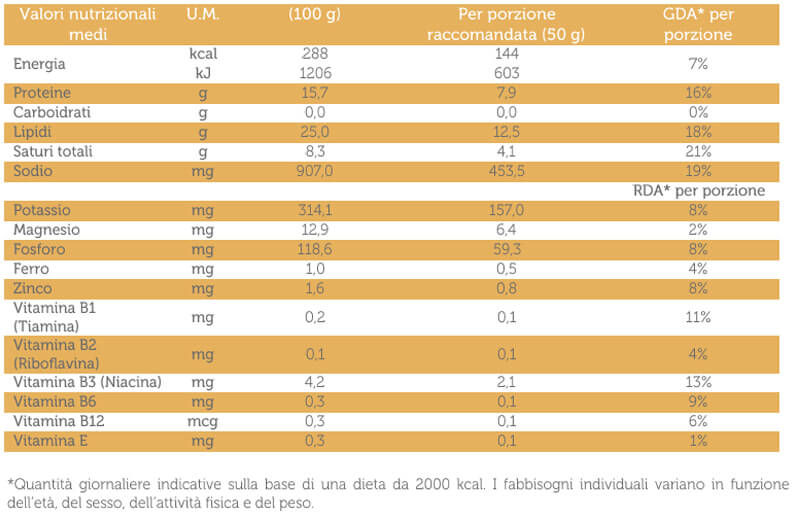
In the last years the “Pancetta” (bacon made of pork belly) has refined its nutritional characteristics, acquiring an always bigger part of mineral salts and vitamins. Within the group of fats, the percentage of unsaturated fatty acids augmented. A serving of pancetta covers 17% of the daily needs of vitamin B1. But what many people do not know is that since 1993 the salt content of pancetta has reduced by 47%, always keeping its authentic taste. Show data details

“Cooked Ham” has reduced its content of sodium and fat. It is a food item rich of “noble proteins”, vitamin B1 and has only 69 calories per portion. Compared to other cooked deli meat products, its consumption is absolutely safe during pregnancy but recommended to everybody who wants to watch his/her figure: the cooked ham produced in Italy today has 48% of fat and 22% of cholesterol less compared to the products at the beginning of the 90s. Show data details
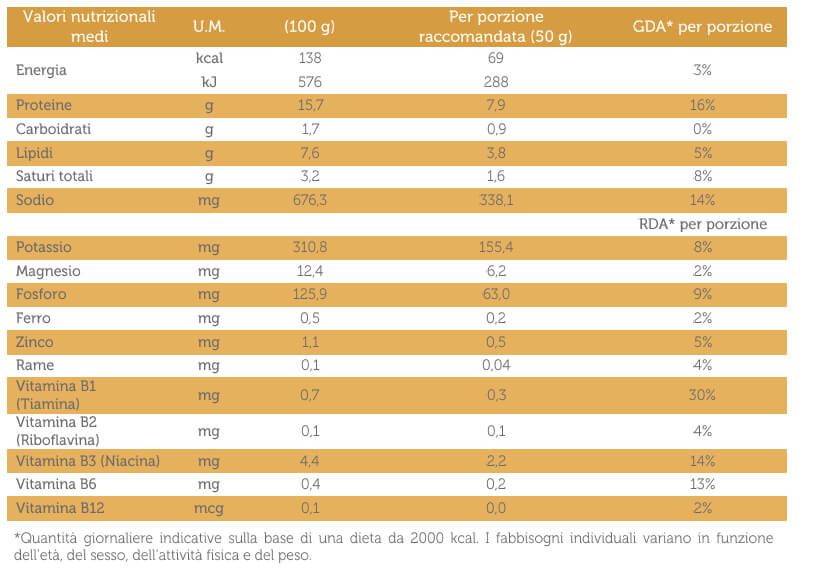
The PDO (Protected Designation of Origin) product “Prosciutto di Modena” is completely free from additives and conservatives as specified by the production regulations. It contains less salt compared to around 25 years ago and it is rich in “noble proteins”, mineral salts and vitamin B6. A serving of 50 grams covers 36% of the daily need of B6. Since 1993 a reduction of 19% of fats can be reported. Show data details

Also the “Prosciutto crudo nazionale” (raw ham wich is produced of Italian feedstock but does not belong to the range of PDO and PGI products) has an important nutritional value. It supplies important proteins and is characterized by a low concentration of saturated fatty acids. Due to its particular texture it can be easily defatted resulting in a product with less calories, even if a group of taste purists would criticize the loss of sweetness on the palate. It shows 15% less salt compared to the past, just in line with the new identity of Italian cold cuts. Show data details
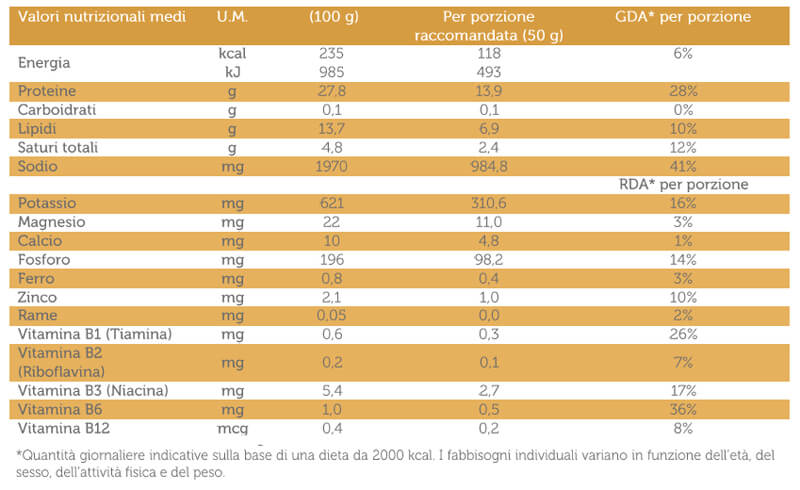
In the category of raw hams, the PDO (Protected Designation of Origin) product “Prosciutto di Parma” (Parma ham) is surely the most famous around the world: laboratory analysis confirm that it is the product with the lowest concentration of sodium. It represents a great source of proteins and contains 13% of lipids, it is rich in vitamin B1 and B6. Compared to the analysis of 1993 on average 31% of salt and 32% of cholesterol have been reduced. Show data details

In the category of raw hams, the PDO (Protected Designation of Origin) product “Prosciutto di Parma” (Parma ham) is surely the most famous around the world: laboratory analysis confirm that it is the product with the lowest concentration of sodium. It represents a great source of proteins and contains 13% of lipids, it is rich in vitamin B1 and B6. Compared to the analysis of 1993 on average 31% of salt and 32% of cholesterol have been reduced. Show data details

“Salame Milano” is rich in “noble proteins”, supplies mineral salts and has a reduced quantity of fats. A serving of 50 grams covers 24% of the daily needs of vitamin B1. Also this type of sausage has a reduction of salt, approximately 15% compared to 1993. Show data details
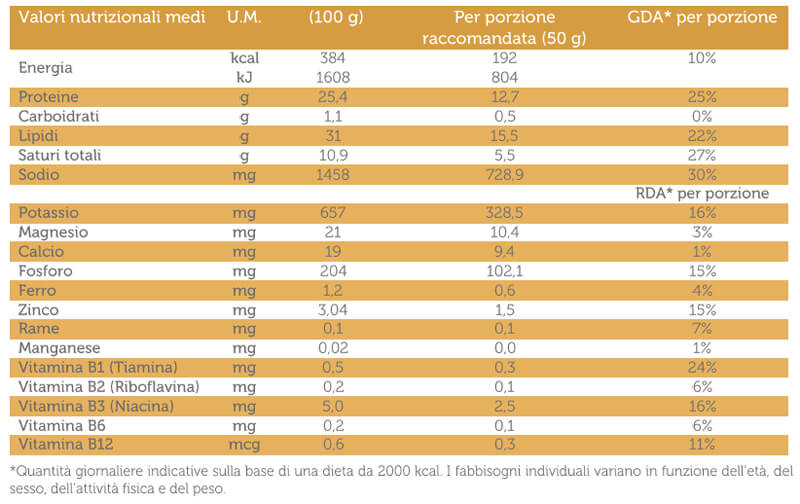
“Salame Milano” is rich in “noble proteins”, supplies mineral salts and has a reduced quantity of fats. A serving of 50 grams covers 24% of the daily needs of vitamin B1. Also this type of sausage has a reduction of salt, approximately 15% compared to 1993. Show data details

The PDO (Protected Designation of Origin) products “Salamini italiani alla cacciatora” (hunter’s salami) are rich in “noble proteins”, minerals and B vitamins. The content of salt, fats and cholesterol was progressively reduced within the year, while the presence of (mono)unsaturated fatty acids could be proved. 18% of salt and 5% of cholesterol compared to the past! Show data details

The PGI (Protected Geographic Indication) product “Speck dell'Alto Adige” has a high content of “noble proteins”, of mineral salts and B vitamins, in particular vitamin B6 (a portion of 50 grams covers 17% of the daily needs). It is interesting to know that the value of nitrate was reduced by 87% since 1993 and that the daily recommended serving of Speck covers 19% of the needs of vitamin B1. Show data details
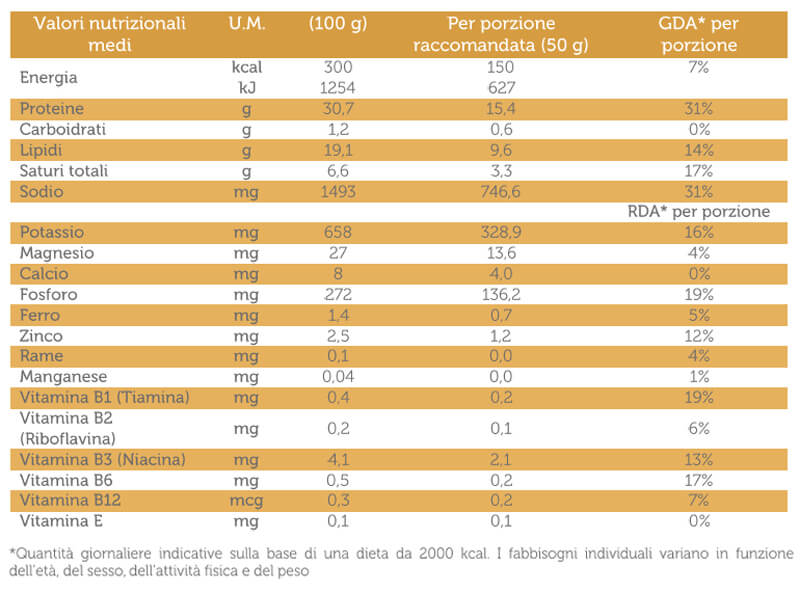
The PGI (Protected Geographic Indication) product Zampone Modena (pig´s trotter) – very similar to cotechino - is rich in “noble proteins” and shows the lowest content of sodium of all sausage products. It guarantees with a serving of 50 grams 12% of the daily needs of omega-6 fatty acids. The most interesting fact is that the analysis made in 2011 showed a reduction in fats of 33%. Show data details
